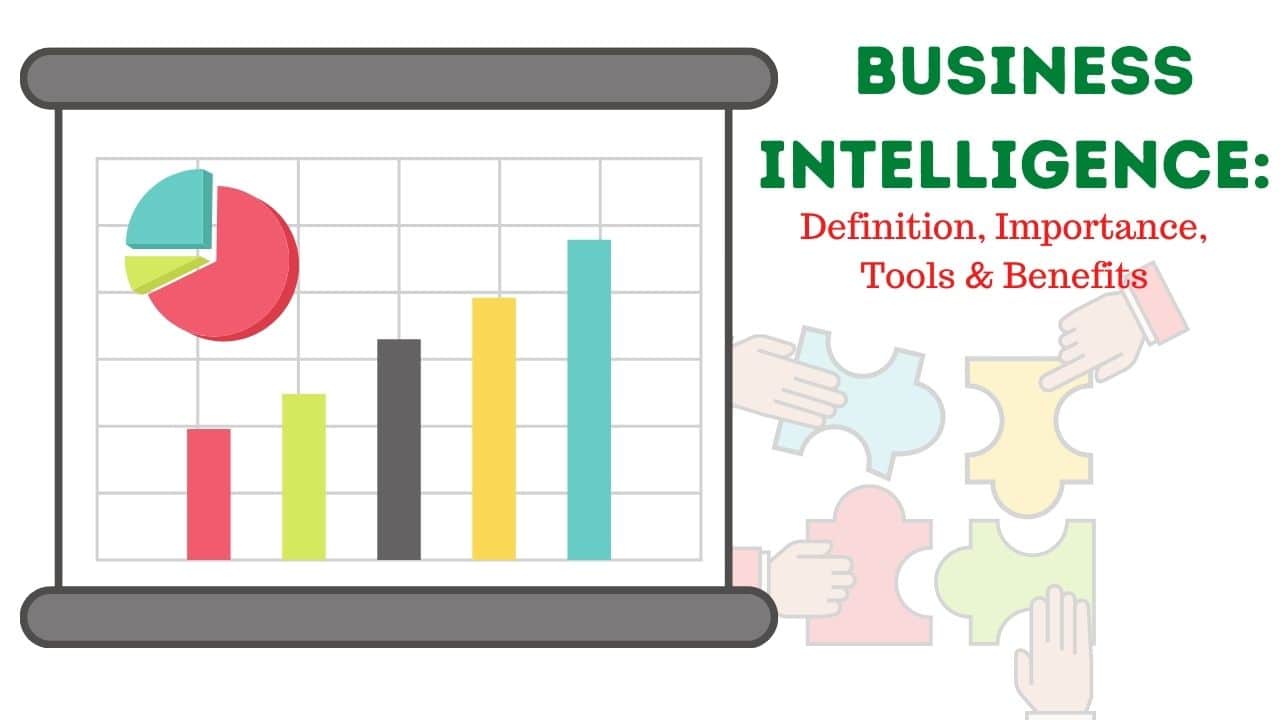After creating a business plan, the next important thing you need to take your business to a greater level is business intelligence.
In this article, we will discuss in detail the meaning, examples, tools, and concepts of business intelligence. In the end, you will have a better understanding of business intelligence is and how you can apply it to your business.
What is Business Intelligence(BI)
Business intelligence (BI) combines business analytics, data mining, data visualization, data tools and infrastructure to support organizations and best practices with further information and decisions.
In practice, you know that when you have modern business intelligence, you get a comprehensive view of your company’s data and use that information to drive change, eliminate inefficiencies, and quickly adapt to market changes and offers.
In the past few years, a process has been developed that includes more information to improve performance and activities. These processes include:
Data mining: Use of the database, statistics, and shame of machine learning records trends.
Statistical analysis: collecting the results from descriptive analytics and further exploring the data using statistics to know what happened and why this trend.
Reporting: Stakeholder and data analysis are needed to complete the entire plan.
Performance metrics and benchmarking: The data of historical data on the performance of the current and upcoming performance of the track to propose the normally customized dashboards.
Analytics order: using preliminary data analysis to see.
Interrogate: By asking about the knowledge of your own type of questions, subtracting the answers of the newly published by BI, both data sets.
Data visualization: analysis by rotating visual images of charts and graphs that are easier for the histogram developer to use.
Visual analysis: Exploring data through visual storytelling to provide insights on the fly and stay in-flow analysis.
Data preparation: compile many data sources, identify measures, and prepare for data analysis.
How to Create Business Intelligence?
A guide to formulating an effective business intelligence plan:
- Be familiar with the aims and strategies of your company.
- Identify essential stakeholders.
- Select a sponsor from among your most important stakeholders.
- Make your selections for the BI platform and tools.
- Establish a business intelligence team.
- Define your scope.
- Prepare your data infrastructure.
- Establish your objectives and a course of action.
Why is Business Intelligence Important?
It can help companies make better business intelligence decisions to get current and historical data in the context of their business. Use the analysts to ensure that the competitor’s organization and performance are running smoother and more efficiently as a benchmark.
Market trends and analysts can more easily identify a flaw or the return of increased sales. With full flood to the right of data, there may be a refuge in front of the service than hiring efforts.
Here are a few ways we can help companies get smarter, smarter business intelligence data:
- Identify ways to increase profits
- Quick answers to important business questions
- Optimize business
- Saying future success
- Spot market trends
- Align activities with strategy.
- Reduce the time it takes to enter and process data.
- Get detailed customer information in real-time.
- Competitive benchmarking data and historical data for continuous improvement.
- Identify and analyze areas for cost reduction and budget allocation.
- Increase internal productivity by spending time on the essentials.
- Compare with given competitors
- Performance track
- Discover problems or difficulties
How Business Intelligence Works
Companies and organizations have questions and goals and goals. Evidence of achievement to answer the questions related to these resolutions: I don’t need the information you collect, analyze, and determine the actions taken in your goals to achieve them.
The technical side of the raw data collected from the real action. Data is processed and with it the data warehouses. Since its inception, users have been able to access the information. The analysis process is just beginning to answer questions.
In addition to B, and were given due to inexperience, analytics or business analytics work together
Business analytics include business intelligence and analytics data, but only for such purposes, e.g. B. Parts of the whole process. B can be concluded from the analysis, helps its users.
Data scientists examine the specific data using statistics and advanced predictive analysis to discover patterns and predict future patterns. Data Analytics asks, “Why did this happen and what happens next?” Business intelligence algorithm models lead them through the bars and the results are operational.
According to the Gartner IT Glossary, business analytics include data mining, predictive analytics, applied analytics, and statistics. “In short, association analysis needs to play a bigger part in the business intelligence war. Answers provide specifically for inquiries to BI-a-Analysis looking for the right answer or advice. However, the processes of analytics companies can be used to continuously improve the tracking of questions and iterations.
Business success is unlikely to answer linear, analytical follow-up questions about iteration. In fact, I think the cycle of processing is data access, discovery, exploration and information sharing. This cycle gave the analytical explanation of how to limit the use of modern developer analytics to respond to changing problems and hopes.
Business Intelligence Strategy
In the past, IT professionals were the primary users of BI applications. However, BI tools have evolved into a more intuitive and easy-to-use solution, allowing large numbers of users in different organizational areas to touch the tools.
Gartner’s Howson distinguishes between two types of BI. The first is traditional or classic BI, where IT pros use internal transactional data to generate reports. The second is modern BI, where business users interact with flexible, intuitive systems to accelerate data analysis.
Howson explains that companies generally choose classic BI for certain types of reporting, such as: B. Regulatory or financial reporting, where accuracy is paramount and the questions and records used are formal and predictable. Organizations typically use state-of-the-art BI tools when business users need information on rapidly changing opportunities, such as: B. Marketing events where a quick assessment is estimated by receiving 100 percent correct data.
While consistent business intelligence is essential to making strategic business decisions, many companies struggle to implement effective BI strategies due to poor data practices, regular errors, and more.
Business Intelligence Tools
Business intelligence tools are designed to help you understand trends and derive insights from your data so you can make tactical and strategic business decisions. Some of the business intelligence tools include:
- Microsoft Power BI
- SAP Business Intelligence
- MicroStrategy
- Datapine
- Sisense
- SAS Business Intelligence
- Yellowfin BI
- QlikSense
- Zoho Analytics
- Looker
- Clear Analytics
- Tableau
- Oracle BI
- Domo
- IBM Cognos Analytics
How Do You Choose a BI Tool?
The key to a successful BI implementation is selecting the correct platform for the job. When selecting your tool, keep in mind which main features will be most beneficial to your organization. Among the primary aspects of BI tools are:
- Simple to use
- Dashboard and visualization choices abound.
- Insightful observations
- Good metric alerts
- Built-in artificial intelligence (AI)
- Flexibility in deployment
- Connectivity to other platforms and apps
- Data connection
- Incorporation into business applications
The Future Role of Business Intelligence
Business intelligence is continually evolving each year so that users can identify current trends in current innovations. Intelligence and machine learning to grow the business with the same design can be integrated into a larger BI.
If they claim there can be any number of community-driven efforts to get the data out, we don’t weigh them down and we partner with them. It will be even more important to collaborate on data visualization in teams and departments.
What are the Types of Data Sources in Business Intelligence?
There are three distinct categories of data sources:
- Relational
- Dimensionally modeled
- Multidimensional {OLAP}






